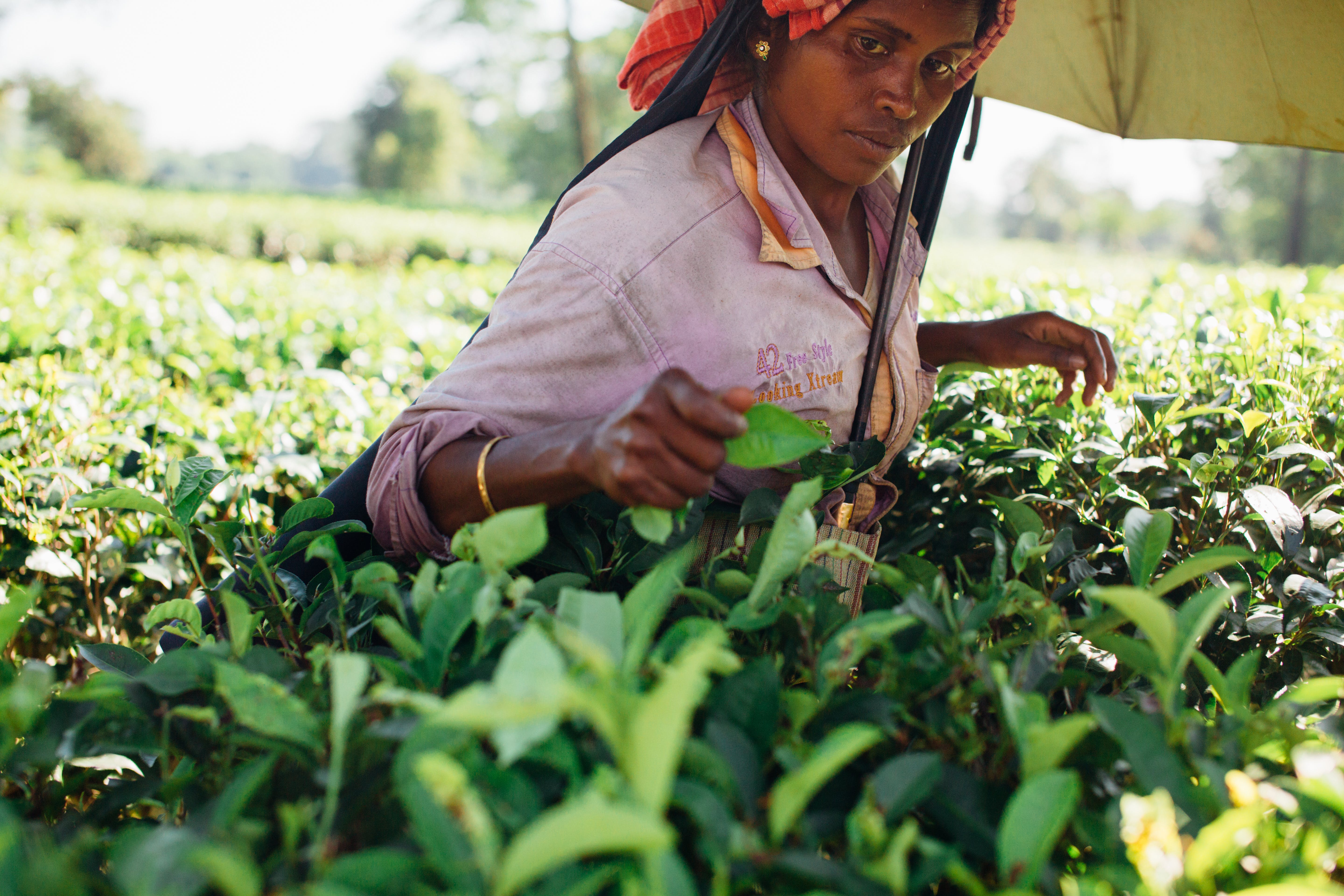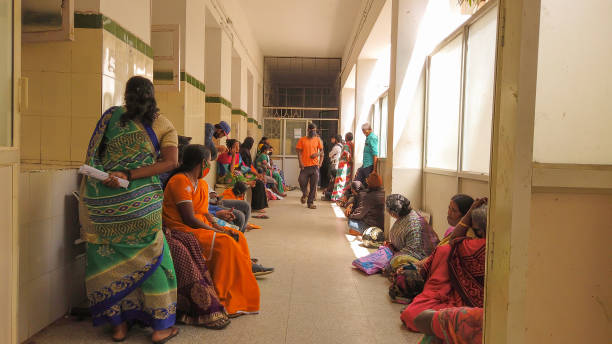Can India’s low-cost housing schemes rise to the climate challenge?
Schemes related to affordable homes need to focus more on the climate vulnerabilities of people residing in them and less on chasing elusive targets
By Aatreyee Dhar / Aug 27, 2021

Stranded assets: India’s low cost housing initiatives will have to be both climate resilient and climate responsive if the country hopes to reduce its vulnerability to the climate crises | Photo: TRT World
The world seems to be at an inflection point. Even as the Intergovernmental Panel on Climate Change (IPCC) issued its latest set of warnings in its Physical Science of Climate Change, news poured in from around the world of dangerous rains, flooding, drought and wildfires. Over several years of worsening climate around the world and multitudes of scientific literature warning of the same, a clear pattern of cause and effect has emerged–the poor are and will continue to be the worst affected by impacts of climate change, to which they have contributed the least.
For India, which is among the most affected countries by climate and weather extremes and simultaneously suffers from endemic levels of poverty, this pattern of vulnerability reveals frightening prospects when combined with warnings of worsening climate impacts. The writing on the wall is clear. India’s poverty reduction strategy, particularly the low-cost housing initiative–Pradhan Mantri Awas Yojana (PMAY)–will be crucial in determining how well the country can mitigate and adapt to the climate crisis.
Launched in 2015, the same year as the signing of the Paris Agreement, the PMAY sought to construct 50 million affordable homes for those households that did not own any permanent housing. While the flagship housing programme has been seen as a central plank in India’s poverty alleviation strategy, the construction-heavy scheme is far from a guaranteed success when it comes to dealing with climate.
India’s construction sector is estimated to release four million tonnes of carbon dioxide annually, making up about 12% of the country’s total greenhouse emissions in 2011. When included with emissions from operating buildings, the sector constitutes close to 40% of all carbon emissions.
So far, approaches to PMAY make use of energy-intensive materials, particularly kiln-fired bricks, steel and concrete. Greener and cost-effective technologies have been sidestepped in the pursuit of landmark targets by 2022. Its adoption for rural homes would have saved 1.6 billion litres of water annually, reduced carbon dioxide emissions by 27 million tonnes, and expedited the pace of construction by 20% through the same years.
But more importantly, have these houses in fact reduced the vulnerability of those that reside in them, particularly to the vagaries of climate and weather?
Why climate resilience is crucial for India’s affordable houses
In India, climate change effects such as severe droughts, devastating floods and cyclones may force more than 45 million people to migrate from their homes in India by 2020, says a report titled ‘Costs of climate inaction: displacement and distress migration.’
To be clear, successful affordable housing must keep people safe during such disasters. As a matter of fact, climate-proofing of affordable housing has warranted benefits. “The mandatory adoption of cool roofs in Telangana and Hyderabad has ensured comfort against the blistering heat waves, rising year after year–in a tropical country like India”, says Abinash Mohanty, senior researcher and programme lead at the Council on Energy, Environment and Water (CEEW), a global non-profit vested in researching the utility of resources.
It’s about time for the government to incorporate climate resilience in its affordable housing and other welfare housing schemes. One of the hiccups to its implementation is the identification of compounding impacts of risks and general assumptions that communities can tackle disasters on their own, especially slow onset climate impacts such as rising sea levels or melting glaciers. “Granular climate risk assessment eludes the housing sector, followed by identification of the critical infrastructure among frontline communities like schools, hospitals and other essential structures,” adds Mohanty.
In Assam, a state rankled by frequent and intensifying floods, houses adopted under PMAY may have been traditional, but not disaster-proof. What’s worse, the housing scheme has failed to reach the state’s climate refugees, who have had to scramble for shelter in the aftermath of floods.
The 2017 Assam flood swept away Umananda Pathori’s house. “The flood swallowed thirty-two stilt-houses”, says Pathori.
He lives in Nikori village of Assam’s Golaghat district, along the banks of the confluence of Dhansiri and Gelabil, tributaries of the mighty Brahmaputra. Given Pathori is yet to receive any housing from the Pradhan Mantri Awas Yojana (Rural), his earlier dwelling was a traditional ‘chang ghor’, or a house on stilts. He belongs to the Mising tribe, which has coexisted with floods since decades, not by fighting them, but through community preparedness.
Traditional houses are held by bamboo stilts and thatched roofs, platformed up to six feet above the ground. Right below the floor are spaces for rearing livestock. Portability is the defining aspect of Mising architecture, which allows for the quick dismantling and re-assembly during flooding events when elevation of the houses need to be increased.
Today, Pathori stays at a 23 square-metre hybrid ‘chang ghor’, which has survived two-three flooding seasons without any damage. Instead of inserting the bamboo poles into the mud directly, deeper bamboo footings are encased in concrete. “Earlier, raging flood waters would snap these bamboo posts away, but the concrete binding prevents it. There is no standing water with such footings, allowing for improved resilience,” Pathori explains.
Financial support to construct the house was provided by Sustainable Environment and Ecological Development Society (SEEDS) in collaboration with the North-East Affected Area Development Society (NEADS), a local NGO. “Allotments under PMAY are ‘chang ghors’, but they fall apart as floods hit. There has been no initiative from the departments concerned to enlist the community, or fight disasters,” says Tirtha Prasad Saikia, joint director at NEADS.
“Earlier, floods shaped our moving lifestyle. But we are trying to resist it by keeping the future in mind, and thereby choosing durable designs and materials”, says Pathori, who also heads the community-driven building process as a part of the SEEDS-NEADS project.
Over 3,000km away, in Tamil Nadu’s Kuilapalayam, Valarmadhy has been grappling with similar precarity. Fueled by warmer waters in the Indian Ocean, cyclones making landfall in southern India have intensified in recent years. Valarmadhy saw the scale of destruction first-hand during last year’s Cyclone Gaza, which swept away many houses, and inundated several others in her village. “In the past four years, this is the fourth house I have constructed. My house is made of uncooked bricks. It may fall anytime,” she says.
Valarmadhy is now working with GoodLiving.eco, an NGO striving to build climate resilient and green housing for low-income communities in Tamil Nadu and Pondicherry, to secure disaster-resilient sustainable housing for herself. The house GoodLiving.eco has designed for her will be built with compressed earth blocks (CEBs) and will possibly have access to rooftop and community solar.
According to Gauri Shenoy, the chief architect at GoodLiving.eco, practices that combine modern technology with traditional architecture, which increase sustainability and resilience of the structures, are gaining traction in India. “No one is saying not to use cement or steel. If you are using pressed soil blocks to build an eco-sensitive building, you need cement for binding or steel for better tensile strength. The idea is to reduce the embodied carbon, or carbon emissions right from the time the material is transported, used and dispersed finally”, says Shenoy, whose architectural designs are inspired from sustainable building solutions experimented at the Auroville Earth Institute.
Building pillars for a community
The subject of public housing in India is often met with disdain as informal settlements continue to explode across the country in the absence of formal housing provision by the state. A research paper by a ‘Coalition for Urban Transitions’ cites at least 99 million people in India live in informal settlements without risk-reducing infrastructure such as drains and sewers.
However, the story of Kerala’s housing policy is a success, both on socio-economic and environmental aspects.
Aswathy S, who lives in one such house provided under the Basic Services for Urban Poor (BSUP) Mission in a former slum colony, has no complaints. BSUP is an initiative seeking to facilitate the accommodation of urban slum dwellers in 65 Indian cities launched in 2015 under the aegis of the Central government’s Ministry of Housing and Urban Affairs and in coordination with relevant departments of state and local governments. Living in a four-storeyed brick building on a scant land in Karimadom Colony at the heart of Thiruvananthapuram, Aswathy occupies a unit in the top floor with two terraces. From one of her rooms, she speaks of its airiness even with sweltering heat outside. “I can feel the cool breeze without any fan,” she says.
The Karimadom colony where the BSUP project has sought to provide permanent housing to residents | Photo: Aswathy.S
The building was constructed using indigenous architectural elements like jallis (carved apertures in brick walls) in place of windows to ensure proper ventilation. Other low-cost architectural innovations utilised include filler slab roofing to reduce the amount of concrete and steel in roofs, curved corners to cut down the number of bricks used in construction, and unplastered walls with a finishing touch of mortar.
“These buildings are load-bearing structures bridging down the cost to a great extent. Beneficiaries contribute towards 10% of the project, let’s say by plastering walls for maintenance once in three years,” said PB Sajan, joint director of COSTFORD, an architectural firm behind the housing project in partnership with the municipal authorities and community-based organisation Kudumbashree. Load-bearing structures refer to designs in which load is carried by the walls of the building. In the case of Aswathy S’s house, least polluting and durable country-burnt bricks were used to achieve this.
Before she was allotted a house under the scheme, Aswathy crammed herself into a makeshift home, which are typically stacked on top of each other in the same area. During monsoons, deadly floods upended her life for months. She moved her belongings to either schools or nurseries, wading through the deluge dredging up waste dumped in a close-by canal. “When the COSTFORD staff showed the videos of the houses they would build for us, I readily approved. Why would I say no to anything that was safer and provided basic amenities?” she said.
Aswathy felt she was involved in exercising her choices over the housing she needed to sustain. Such participation from the community improved the implementation of Kerala’s BSUP mission. This included community consultations to incorporate culturally appropriate houses; executing cost-cutting ideas, decreasing embodied carbon and tackling climate change. Building housing units with the same investment elsewhere would have reduced the nationwide costs of BSUP by ₹118 billion, or built an additional 816,000 homes.
A change in approach on the cards?
Right now, India’s construction market is adjusting its building techniques to reduce the greenhouse gas emissions and make green buildings accessible to those with slender means. The Light House Project under the Global Housing Technology Challenge-India(GHTC-India) floated last year for economically weaker sections in Indore, Rajkolt, Chennai, Ranchi, Agartala and Lucknow is currently in the pipeline.
At each location, 1,000 houses will be installed with alternative technology under guidelines of the Pradhan Mantri Awas Yojana (Urban) for sustainability concerns. These buildings will have to be tested under the “GRIHA for Affordable Housing” rating variant for no-cost sustainability measures. Compliance to criteria such as water savings, waste management, sustainable building materials, energy and social aspects will be validated on-site for these structures by the GRIHA (Green Rating for Integrated Habitat Assessment) council during construction.
Over the past two years, the project has seen delays due to the ongoing pandemic, which otherwise was slated to be completed in 12 months. When asked about the slow uptake on green buildings in the country, Akash Deep, senior programme manager, GRIHA, said, “Until now, people would associate sustainable homes with the wealthy. This stems from mindlessly aping the West when green buildings–the older, decadent structures–had in-built eco-friendly designs. Sustainability has to start at the designing stage itself, which when delayed comes with costlier risks.”
With the majority of India’s future infrastructure yet to be built, how well India balances sustainability with resilience will determine the country’s adaptability to the vagaries of climate. Failure to do so sufficiently will simply amount to trading material poverty for future liability.


